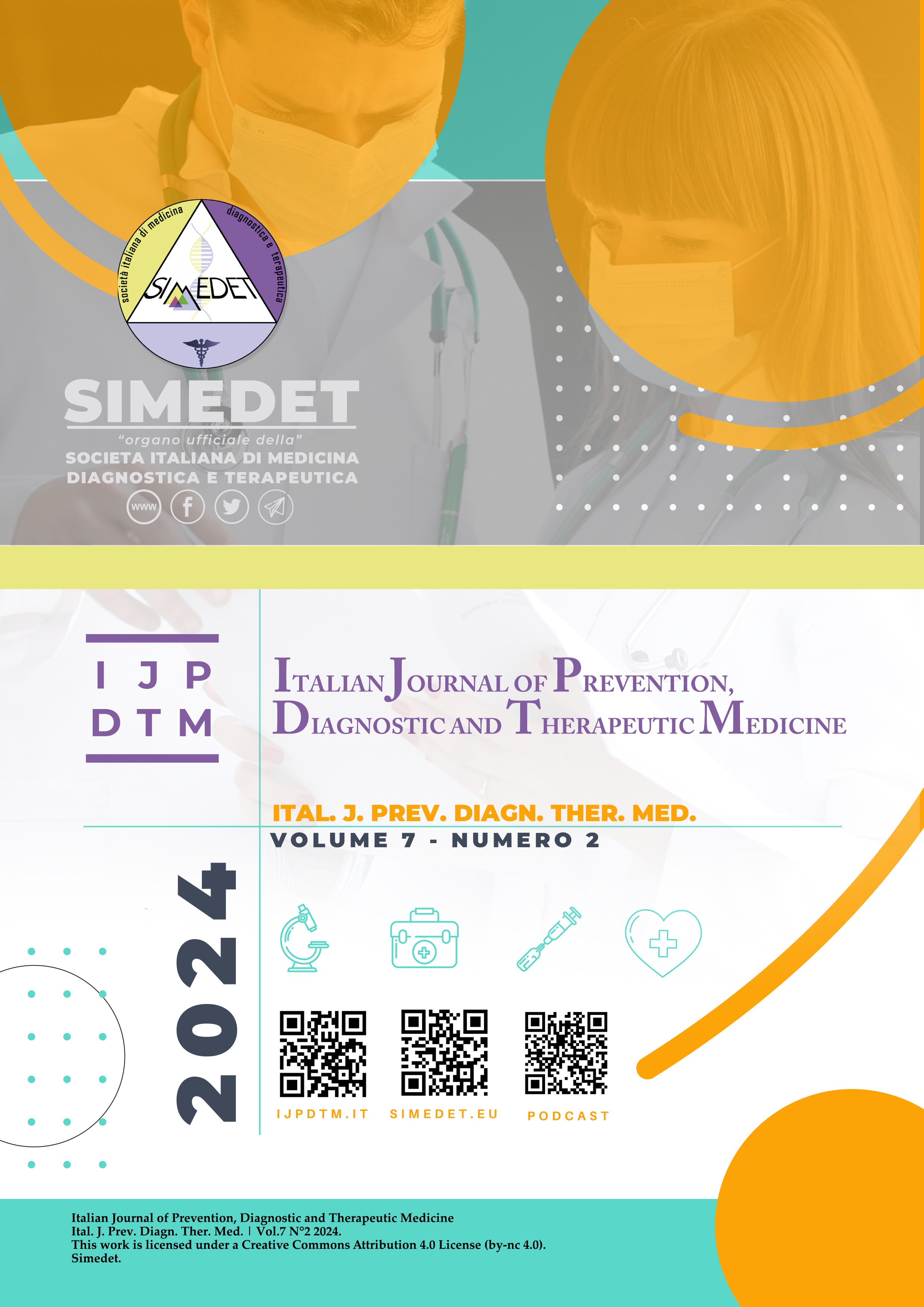Dermatomyositis clinical, diagnostic and therapeutic aspects
Main Article Content
Abstract
Dermatomyositis (DM) is a rare autoimmune disorder characterized by different skin features and variable muscle involvement. DM is usually classified in four main variants: classic DM, amyopathic DM, paraneoplastic DM, and juvenile DM.
Clinically, patients show different skin features, including heliotrope rash and Gottron’s papules. Furthermore, patients can show muscle involvement, usually a symmetrical weakness of the proximal muscles. In addition, DM belongs to the facultative paraneoplastic dermatoses and therefore several solid or hematologic malignancies can be detected in DM patients.
Serologically, a wide range of autoantibodies can be detected in patients with DM. Indeed, distinct serotypes can be related to specific clinical features, different risk for systemic involvement, and variable response to therapies. Systemic corticosteroids are still considered the first-line therapy, but several steroid-sparing agents, such as methotrexate, azathioprine, or mycophenolate mofetil, have been reported as effective in treating DM.
Downloads
Article Details

This work is licensed under a Creative Commons Attribution-NonCommercial 4.0 International License.
References
Didona D, Solimani F, Caposiena Caro RD et al. Dermatomyositis: a comprehensive review of clinical manifestations, serological features, and therapeutic approaches. Ital J Dermatol Venerol. 2023 Apr;158(2):84-98.
Didona D, Juratli HA, Scarsella L et al. The polymorphous spectrum of dermatomyositis: classic features, newly described skin lesions, and rare variants. Eur J Dermatol. 2020 Jun 1;30(3):229-242.
Didona D, Hertl M. Paraneoplastic autoimmune dermatoses. Hautarzt. 2021 Apr;72(4):277-287.
Didona D, Juratli HA, Scarsella L et al. Amyopathic and anti-TIF1 gamma-positive dermatomyositis: analysis of a monocentric cohort and proposal to update diagnostic criteria. Eur J Dermatol. 2020 Jun 1;30(3):279- 288.

